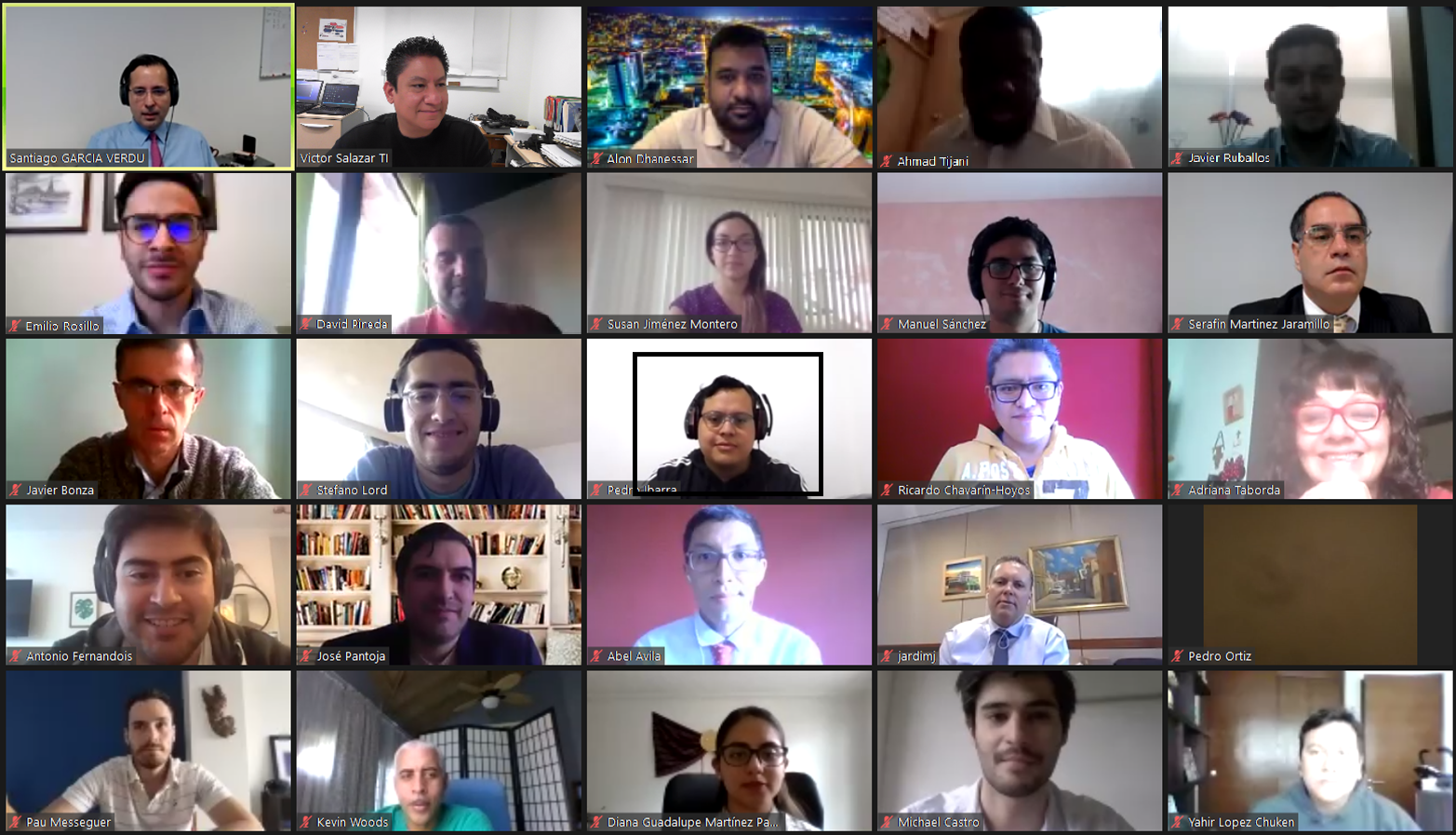
Financial Econometrics with applications to Central Banking
Digital Course, September 21-25, 2020.
Our I Financial Econometrics Course began with Autumn. We met digitally for a week in the mornings, having two sessions on each day, from September 21 to 25, 2020. There were 50 registered participants. The program combined theory with empirical and applied aspects of the subject. At a brisk pace, we covered several topics: from estimation, financial derivatives, and risk measures to machine learning. For instance, we explored how the implied volatility of a financial option is obtained, how it fails to satisfied the Black and Scholes’ assumptions, and how it relates to the VIX index. As another case in point, we explored several ways of estimating the VaR, some of its shortcomings, like not being a coherent risk measure, among other issues.
Monday, September 21
Opening remarks ![]()
Santiago García-Verdú, CEMLA and Banco de México
Session 1: Time Series Models
Santiago García-Verdú, CEMLA and Banco de México
We will start by reviewing OLS. We will explore AR models and explain that, while they are popular, they have some limitations for modelling macro and financial data. The notions of stationarity and seasonality will be explained. We will state Wold’s Decomposition Theorem. We will study VAR models, both reduced and structural forms, their estimation and key identification strategies.
Session 2: Estimation Methods
Santiago García-Verdú, CEMLA and Banco de México
We will review the Newton-Raphson method. It is conceptually important as its extensions are widely used in optimization algorithms. We will explain some of the main reasons why it might not arrive at the solution. We will revise two key statistical estimation methods: maximum likelihood and GMM. We will also explore how MLE can be used to estimate a VAR and how GMM can be used to estimate an Euler Equation.
Tuesday, September 22
Session 3: Futures and Forwards
Santiago García-Verdú, CEMLA and Banco de México
We will determine, based on the absence of arbitrage, the price of a future. We will discuss the difference between forwards and futures. We will take a look at the Federal Funds Rate Futures and explain why they are biased forecasts of the Federal Funds Rate. We will characterize their bias in terms of the associated horizon and risk aversion. We will explain Non-Deliverable-Forwards, which have been used by several central banks in the region to intervene in their FX markets.
Session 4: Interest Rate Models
Santiago García-Verdú, CEMLA and Banco de México
We will explore simple models of interest rates. We will explain the term structure of interest rates and examine it using principal component analysis. We will explore affine term structure models and consider several issues on their estimation. We will present simple continuous interest rate models and the Euler method to discretize them to estimate their parameters.
Wednesday, September 23
Session 5: Asset Pricing Models
Santiago García-Verdú, CEMLA and Banco de México
We will describe the binomial tree models and present an estimation method. We will explore the no arbitrage condition in this model. For their part, we will discuss why continuous nondifferentiable paths are reasonable models for asset prices. We will present the geometric Brownian motion. We will explore how to estimate its parameters.
Session 6: Options
Santiago García-Verdú, CEMLA and Banco de México
We will consider the binomial tree as a pricing tool for options, both European and American. We will estimate the exercise boundary of an American option in discrete time. We will state the Black and Scholes formula and consider how to estimate its parameters. We will value a European option through three methods: formula, risk-neutral valuation and constructing a replicating portfolio.
Thursday, September 24
Session 7: Volatility Models
Santiago García-Verdú, CEMLA and Banco de México
We will explain why the more common models can be inadequate for finance and macroeconomic time series, and how heteroscedastic models can be an alternative. We will estimate a stochastic volatility model with GMM.
Session 8: Non-Parametric Models
Santiago García-Verdú, CEMLA and Banco de México
We will explore yield curve fitting with splines and compare it to Nelson Siegel. We will explain kernel regressions and estimate kernel densities using financial data. We will estimate volatility smiles and smirks. Finally, we will back out pricing density functions from market data.
Friday, September 25
Session 9: Risk Management
Santiago García-Verdú, CEMLA and Banco de México
Given a price series, we will explain how to estimate its Value-at-Risk (VaR) through different approaches. We will also explain its expected Shortfall (CVaR). We will briefly discuss coherent risk measures and the extent to which the VaR satisfy them. We will also explore conditional VaR (CoVaR). Break
Session 10: Machine Learning
Serafín Martínez-Jaramillo, CEMLA and Banco de México
The purpose of this session is to introduce the building blocks of machine learning and discuss a few popular methods. The reviewed concepts will include:
• Train, Test and Validation Samples
• Cross-Validation
• Introduction to Shrinkage (Lasso and Ridge)
• Neural Networks
• Clustering methods

